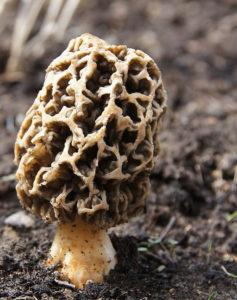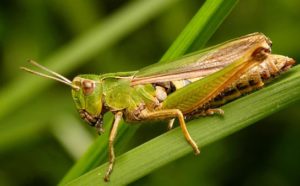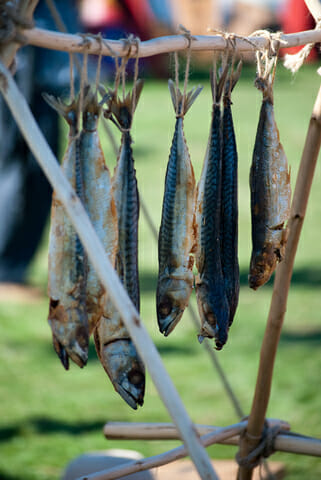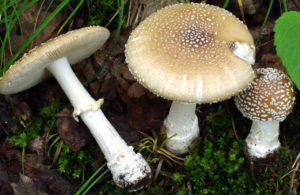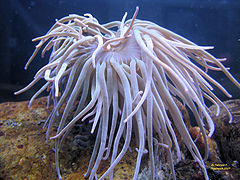.jpg) OWOCE JADALNE
OWOCE JADALNE
Owoce jadalne bogate są w wiele cennych składników pokarmowych, takich jak cukry czy witaminy A, B i C. Wiedzą o tym również zwierzęta. Oprócz ptaków czy ssaków, także niektóre owady żywią się owocami. Możesz jednak dzięki temu wzbogacić swą wegetariańską dietę o jadalnego robaczka, którego znajdziesz w środku owocu. Pamiętaj, by nie najadać się zbytnio owocami jednego rodzaju.
W krajach o cieplejszym klimacie często występuje dzika winorośl (Vitis). Oprócz winogron można jeść po ugotowaniu także jej liście. Różne gatunki poziomki (Fragaria) rosną w lasach i na suchych łąkach w Eurazji, Ameryce Północnej i Południowej. Jej owoce są bardzo słodkie, smaczne i bogate w witaminę C.
Malina moroszka (Rubus chamaemorus)
Rośnie w zimnej i umiarkowanej strefie półkuli północnej. Ta przypominająca jeżynę roślina osiąga 30 cm wysokości, ma białe kwiaty i owoce podobne do owoców maliny pospolitej.
Męczennica (Passiflora)
To rosnące w strefie międzyzwrotnikowej i podzwrotnikowej, zwłaszcza w Ameryce Południowej, pnącze o dłoniastych lub klapowanych liściach oraz białych bądź fioletowych kwiatach. Jadalne owoce męczennicy to duże, fioletowe jagody, bardzo soczyste.
Borówka czerwona (Vaccinium)
Inaczej brusznica wydająca bogate w witaminy jagody, rośnie w tundrze i lasach strefy umiarkowanej.
Jałowiec (Juniperus)
Występuje najczęściej w rejonach górskich na półkuli północnej; drzewo lub krzew iglasty. W niektórych regionach Ameryki Północnej bywa nazywany ,,oregońskimi winogronami”. Dojrzale, niebieskie szyszkojagody nadają się do jedzenia, choć mają trochę cierpki smak.
OWOCE TRUJĄCE
Owoce przyciągają zwierzęta, które zjadając je rozsiewają nasiona. Wiele trujących roślin wydaje jagody, które wyglądają na jadalne. Stanowią one niebezpieczeństwo dla osoby, która musi przetrwać w terenie, jedząc wyłącznie to co znajdzie. Podobnie jak w wypadku grzybów, czy korzonków i bulw, najlepiej nauczyć się rozpoznawać kilka odmian jadalnych, a innych owoców unikać.
Dzikie wino (Parthenocissus)
Granatowe lub fioletowe jagody tej rośliny strefy umiarkowanej przypominają winogrona. Jagody roślin pnących podobnych do winorośli są niejadalne.
Jarząb (Sorbus)
Chociaż owoce niektórych gatunków nadają się do jedzenia, najczęściej białe jagody tej rośliny są trujące. Lepiej nie jeść żadnych owoców. Trujące białe jagody ma również czerniec gronkowy i niektóre gatunki z rodziny psiankowatych.
Poziomkówka (Duchesnea)
Owoce przypominają truskawki; są śmiertelnie trujące. Roślina występuje w strefie międzyzwrotnikowej w Azji i Ameryce Północnej.
INNE TRUJĄCE OWOCE
Wiele roślin rosnących zwłaszcza w strefie równikowej i zwrotnikowej ma trujące owoce. Niektóre z nich nie są zbyt groźne, dopiero po zjedzeniu większej ilości mogą wywołać biegunkę lub nudności. Inne zawierają niesłychanie silne toksyny, których nawet mała dawka może okazać się śmiertelna. W dzikim terenie ryzyko zatrucia wzrasta, a jego konsekwencje mogą okazać się groźniejsze, jeśli organizm jest już wycieńczony. Wśród powszechnie występujących roślin o trujących owocach należy wymienić wilczą jagodę (Atropha), której lśniąco czarne owoce są śmiertelnie trujące. Natomiast purpurowe jagody obrazków plamistych (Arum) wywołują po zjedzeniu ciężkie dolegliwości żołądkowe. Również zjedzenie białych lub czarnych jagód czerńca gronkowego (Actaea) grozi wystąpieniem dolegliwości żołądkowych i wymiotami. Nawet owoce dzikiej jabłoni (Malus) zjedzone w większej ilości wywołują biegunkę. Rosnące w strefie międzyzwrotnikowej i podzwrotnikowej drzewo kulczyba (Strychnos) ma podobne do pomarańczy owoce, których nasiona zawierają śmiertelnie trującą strychninę.

